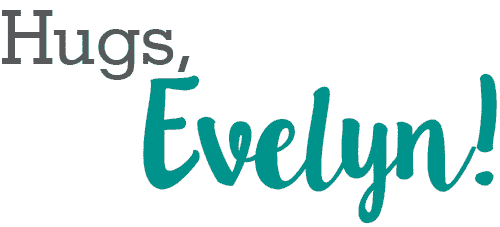How do you attract more bees to your garden? Plant these top 10 flowers for bees in your yard or garden to help save bees. And you can purchase or build a mason bee house and a DIY bee bath for your back yard.
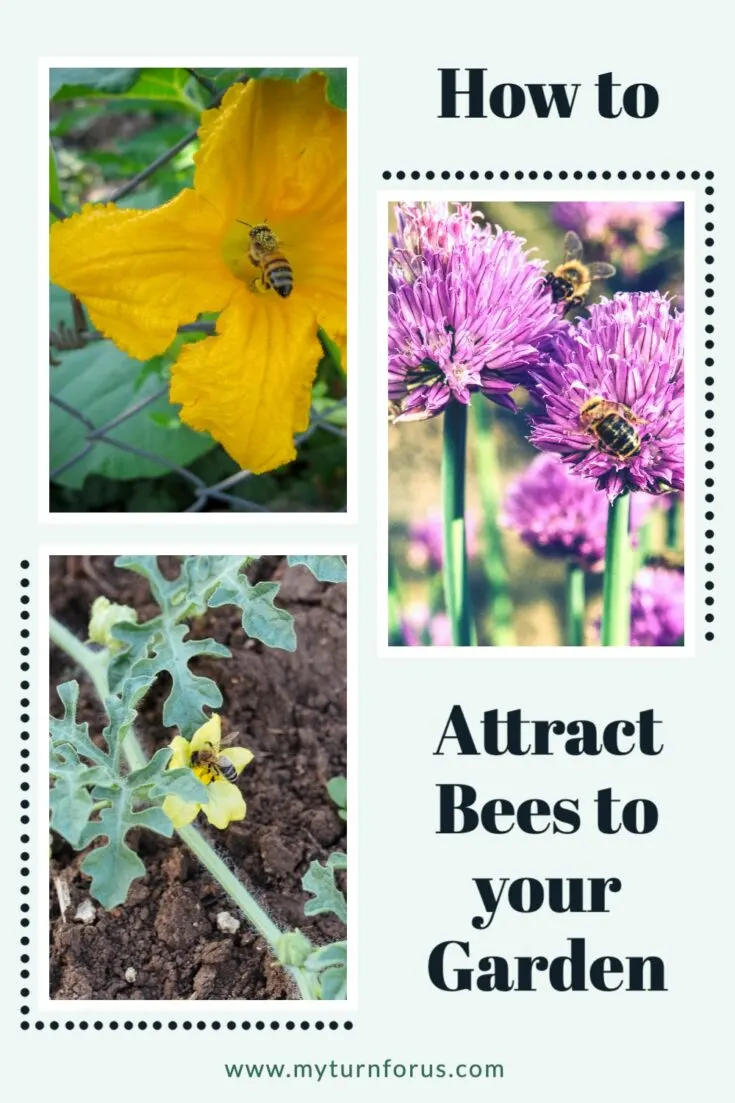
One of the best things that can help your garden thrive is a host of beneficial bugs. These bugs do everything from pollinate your garden vegetables to control unwanted bugs that come into your garden. And a great way to attract beneficial bugs into your garden is to provide them with a home. A home will encourage them to stay when they come through your garden. Building a Mason bee house and houses for other beneficial bugs will help your garden thrive. And making and placing a DIY bee bath near your garden will attract bees and other beneficial bugs. These are several easy ways to attract and help save bees in your garden.
This post contains affiliate links which means if you make a purchase we might receive a small commission at no additional cost to you.
How to help Save bees and have beautiful bee-friendly garden:
With bees struggling many are looking for ways to help them thrive. As we plant our spring gardens there are things we can do to help the bee population. Growing a beautiful bee-friendly garden can be easy. And it’s a great joy to gardener’s wish to help the bee population grow in the coming months. When planting a bee-friendly garden is easy with these tricks you can keep your garden safe for bees while enjoying it’s bountiful beauty. It’s not hard to help bees thrive.
- Plant flowers and flowering vegetables that will bloom at different times of the year. Focus on early spring and late fall blooms can help sustain bees as they awaken and as they prepare to settle in for the winter. Staggering blooms dates around your garden can help keep it looking amazing as the seasons flow.
- Focus on native plants in your garden. When we grow native plants we grow plants that are adapted to the weather and will grow and produce best in your area. Local plants thrive better and provide more nectar and pollen for the bees. Local plants are also the best diet for local bees that have adapted to particular plants over the years in one specific area.
- Be mindful of pest control. It is easy to buy a pesticide and just spray down your garden to be done with it but this can be damaging the local bee population as pesticides kill them as well. When buying plants avoid using big-name stores that transfer plants across state lines and have to spray the plants. Instead, opt for local nurseries that do not need to spray plants to say within the law.
Our Top 10 Flowers for Bees:
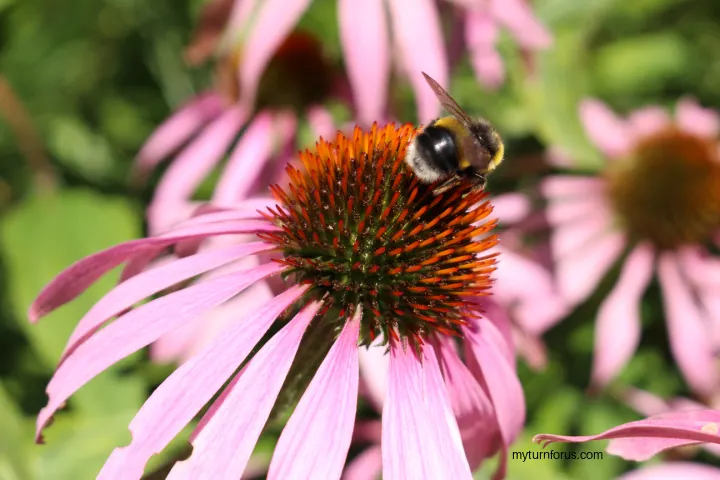
Plant flowers that attract bees easily from a distance. Daisies, coneflowers (Echinacea), and black-eyed Susans all have a pattern that can easily catch the eye of bees from a distance. And they provide a large amount of pollen that can feed the bees. There are hundreds of flowers that help bees. But we have tried to narrow it down to these top 10 flowers for bees that have multiple uses.
Top 10 Flowers for Bees
- Borage
- Bee Balm
- Calendula
- Lavender
- Echinacea (coneflower)
- Chive Flowers
- Sunflowers
- Black-eye Susans
- Nasturtiums
- Yarrow
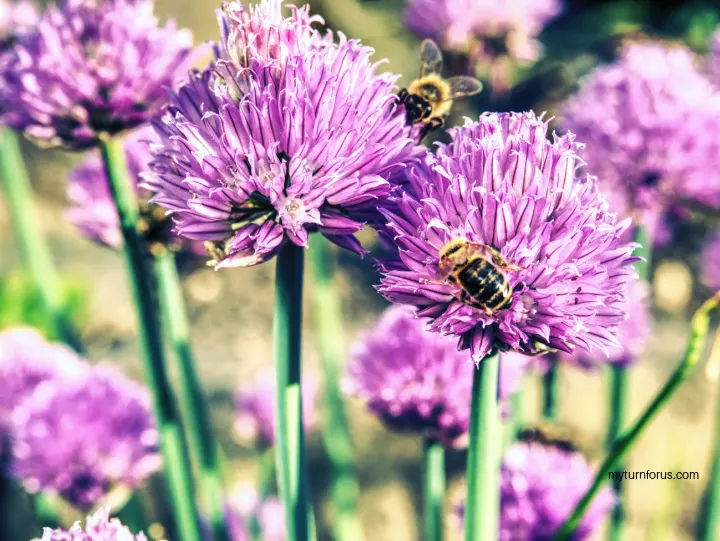
And if any of your herbs are allowed to flower they will attract pollinators and bees such as these gorgeous chive’s blooms.
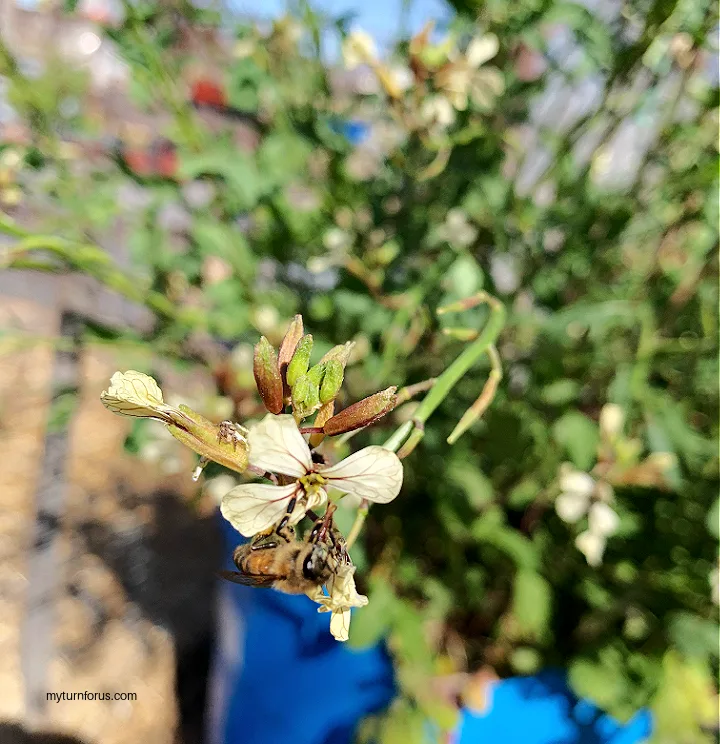
Our spring arugula “bolted” and flowered in March due to an early heat wave. It produced an abundance of flowers and Bees, butterflies and wasps flocked to it. While it wasn’t always attractive to us, it was very attractive for many beneficial insects.
Build a DIY Bee Bath:
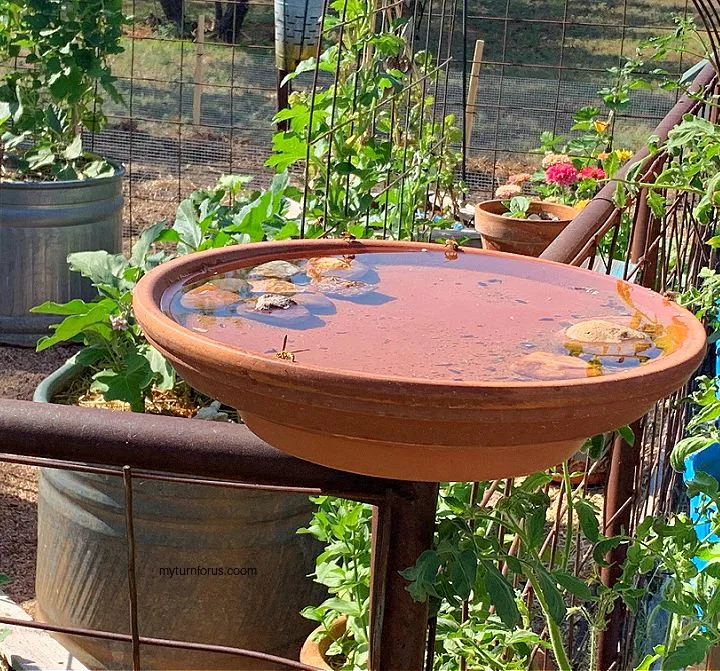
You need to supply bees with a safe way to have water. Bees need water just like other animals but are often easily drowned while searching for water. To make your DIY bee bath fill a shallow dish or pie tin with rocks and pebbles then fill water up to the top of the rocks. Leave plenty of space for bees and butterflies to rest while keeping dry.
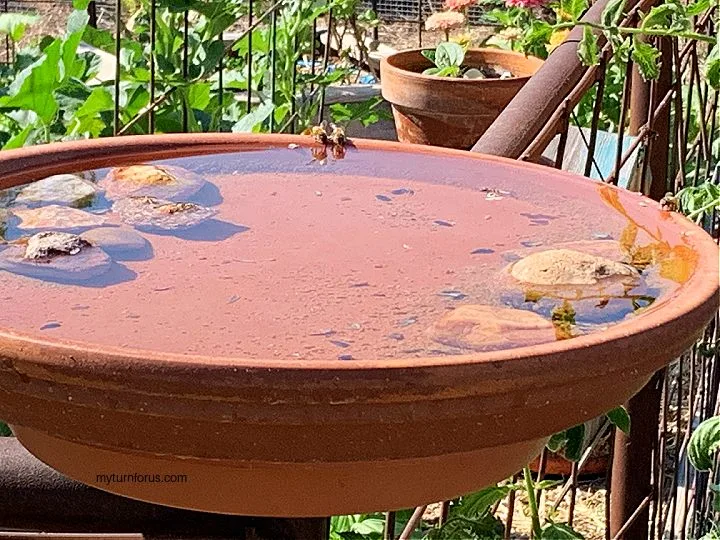
We use 16″ clay saucers and mount them on the garden fence. The sloped sides plus the rough terra cotta surface is easier for bees to balance. Add small rocks for landing pads or rescue aids for the bees and wasps so they don’t drown. And be sure and keep them filled with fresh water. DIY bee baths are an easy way to help the bee population and in return they pollinate your garden.
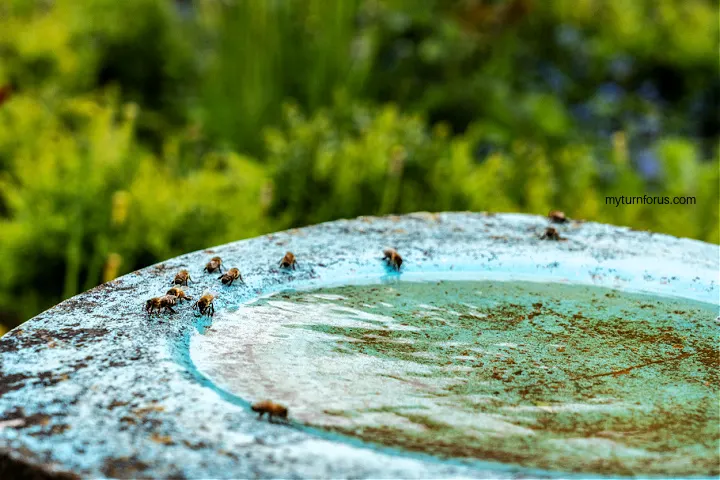
Any bird bath can become a bee bath if the slides are sloped. But it’s always a good idea to place pebbles or rocks so the bees have landing pads and will not drown.
Attract Mason Bees to your Garden:
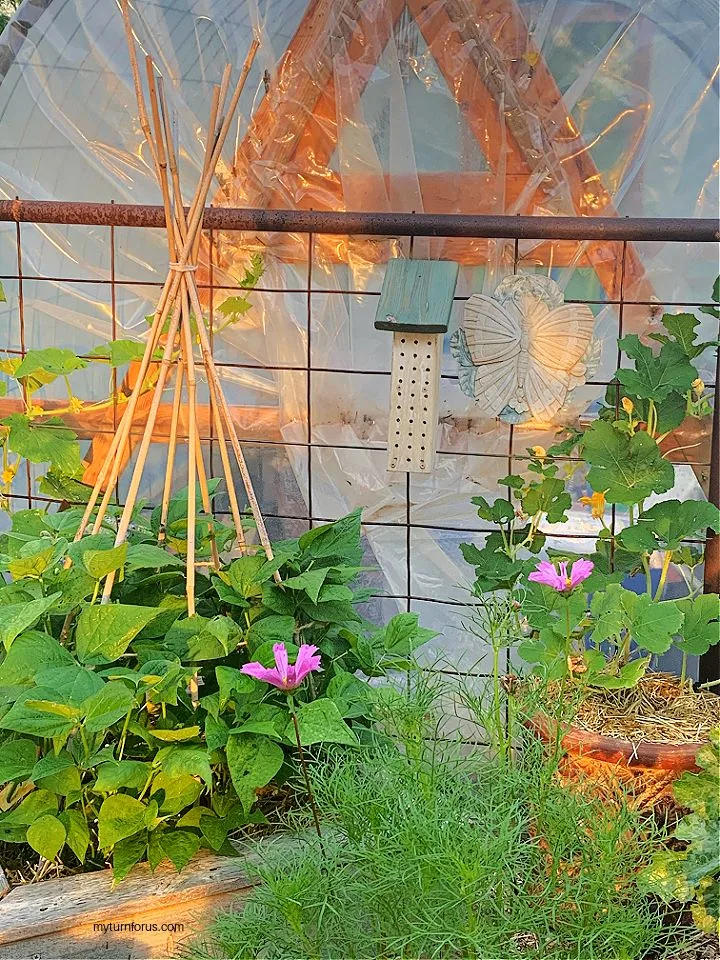
Most bees do not live in hives but are much more solitary and need a smaller place to stay. Placing a mason bee house in your garden area can be a great way to provide Mason bees a great place for them to build their nests. And these bees will likely stay close to their new home you provided for quite some time helping to pollinate and protect your garden.
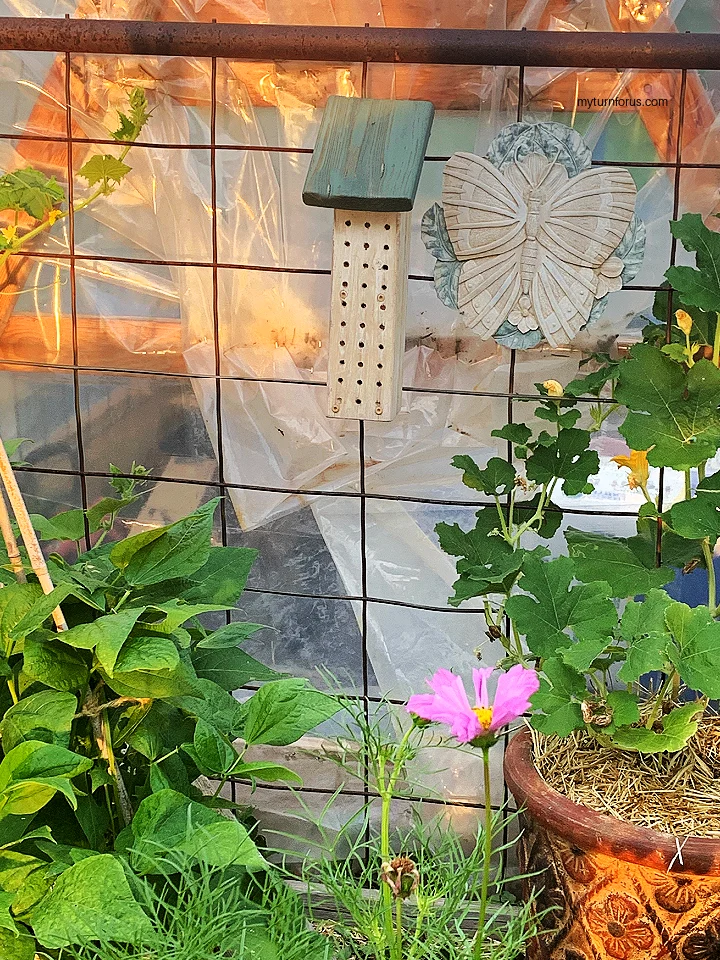
What you need to Build a Mason Bee House:
We used two 2X4’s because that’s what we had but a 4X4 or bigger would be even better. The front board is 12 inches tall and the back is 15 inches both cut on the same angle to shed water. The roof is a 1X6X6 leftover piece of wood.
Supplies:
- One 4 x 4 untreated lumber, cut on an angle to shed water
- One 1 x 6 x 6 piece of lumber (for roof)
- Wood Screws
Equipment Needed:
- 5/16 drill bit
- Drill
NOTE: Use only untreated wood.
How to Build a Mason Bee House:
Mason bees do not tend to sting because they do not have a hive and honey to protect but they are great pollinators for your garden.
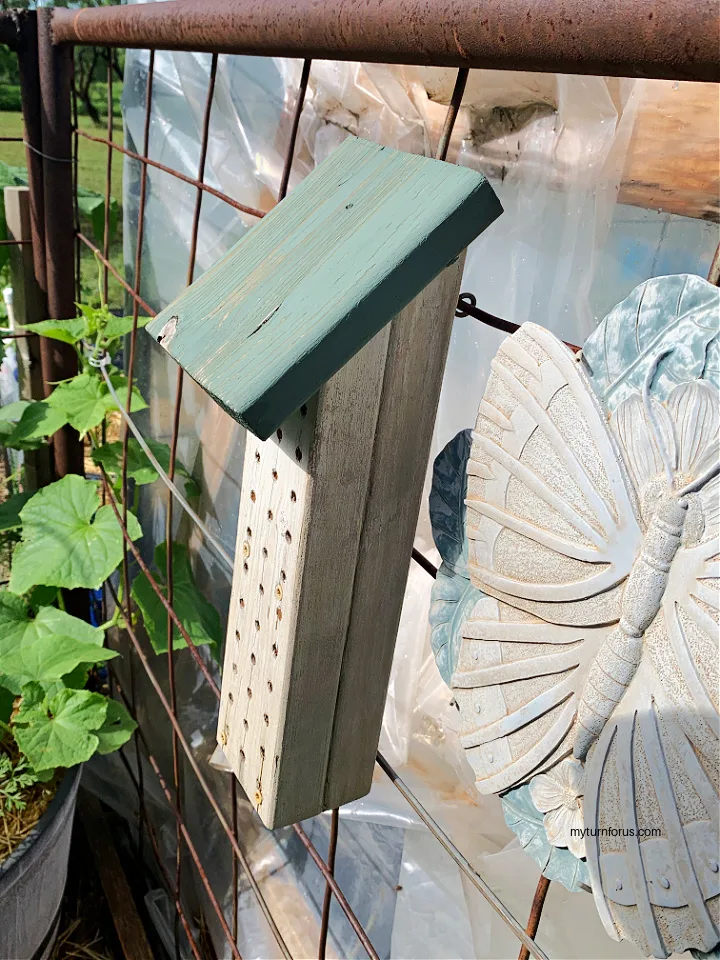
Instructions to build a mason bee house:
Put everything together with wood screws. If using several pieces of wood such as two or three 2×4’s, screw these together to make a 4×4 pieces or better yet 4×6 pieces of lumber.
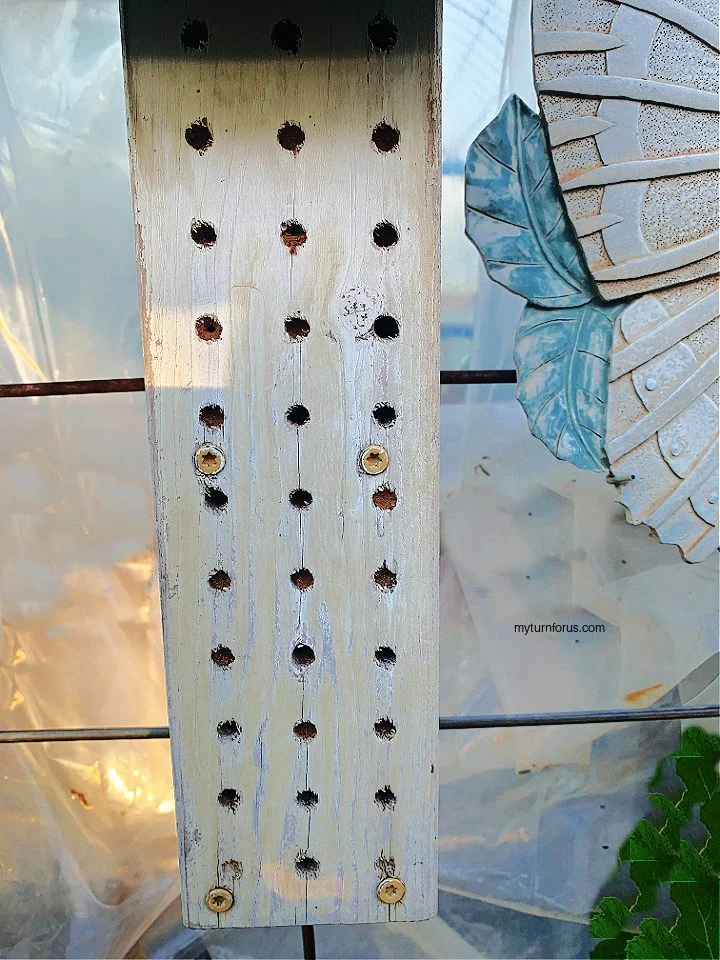
- You will need to add bee holes to your bee box for the bees to nest. But drilling different size holes will attract different varieties of bees. A ¼ inch wide and 4 inches deep hole will make a leafcutter bee feel right at home. But Mason bees like thinner 5/16 inch holes that go deep at roughly 6 inches.
- Mason bee holes are drilled with a 5/16 drill bit and are not drilled all the way through so it’s a cave not a tunnel. Measure and mark your drill bit so you know when to stop drilling.
- Drill rows of evenly spaced holes
- Cut top end on an angle to shed water and place a roof using wood screws. Add the 1 x 6 x 6 piece of lumber to the top for a roof using wood screws.
Be aware if you paint it (as we have) the smell may deter bees but as it fades it will be more hospitable. Ours has faded and worn and we believe thats why we have nesting bees this year.
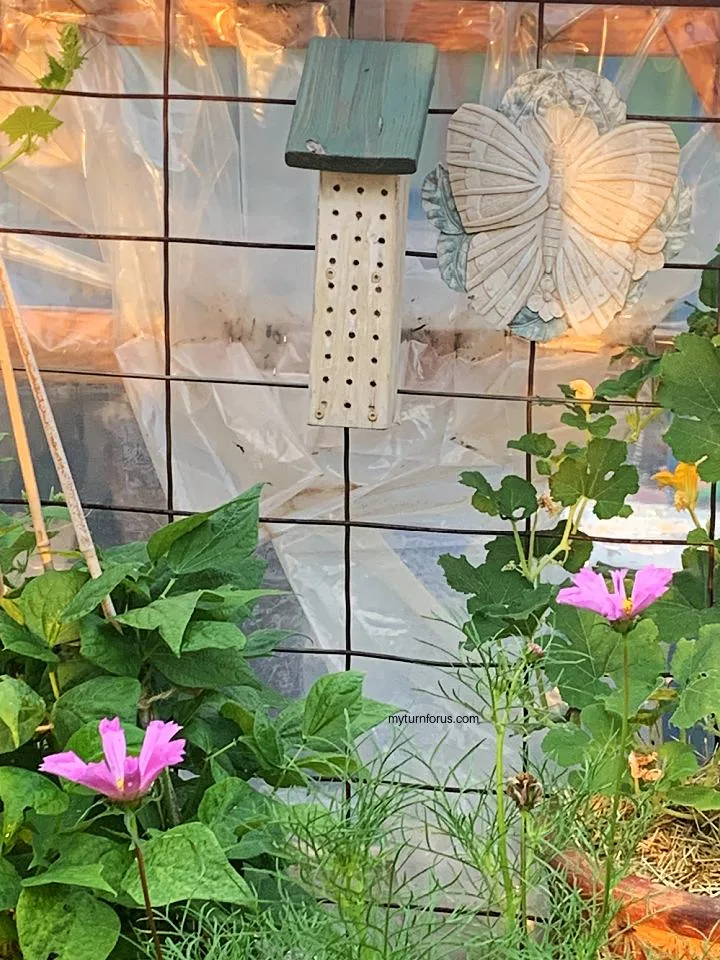
Place your mason bee house in a safe place that will be relatively blocked from the wind and direct sun. The side of your shed or on a tree is perfect but aim for a place near your garden. Plant any of top 10 flowers for bees nearby as they will attract the bees to visit your garden where they will find their new home.
Purchase a Mason Bee House to attract bees
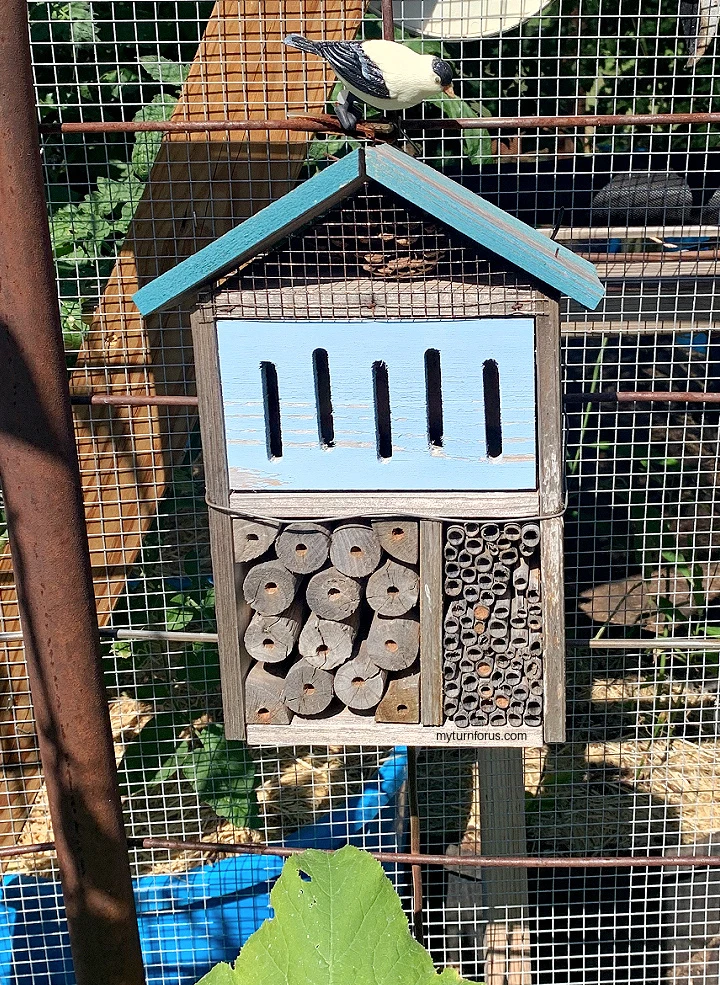
If you do not wish to build a mason bee house they can be purchased. Most garden or farm supply stores will have a several Mason bee houses. This one we found at our local Tractor Supply a few years ago.
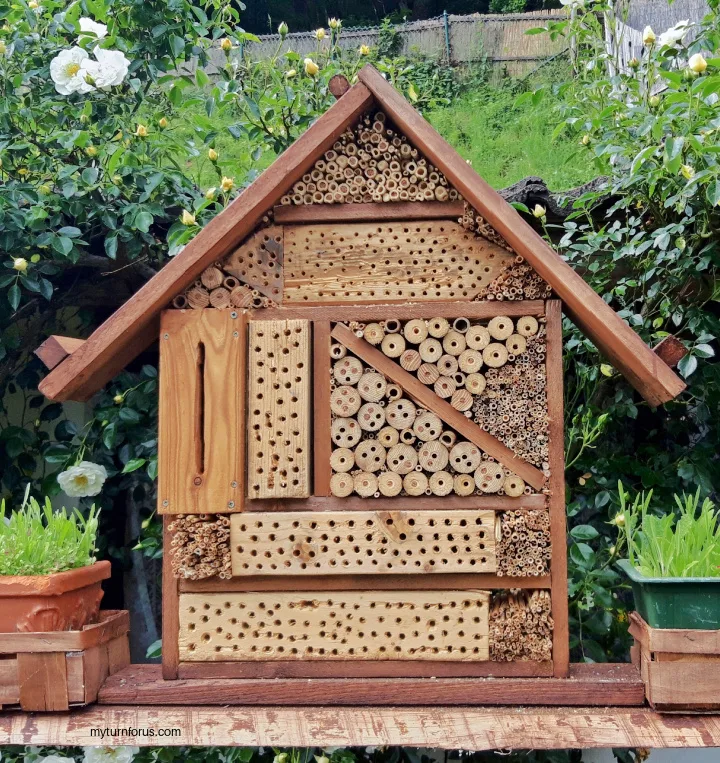
Or you can find several different styles and sizes of these mason bee houses online. So you do not have to build a mason bee house to provide these bees a safe space in your garden.
Other ways to how to attract more bees
- Consider changing your lawn. Allowing clover to become the main ground covering in your yard is a great way to provide food for the bees. The clover doesn’t take as much mowing and maintenance as a traditional lawn.
- Also you could give beekeeping a try. Getting your own beehives is a great way to help your garden thrive with bees ready to pollinate your garden all season long. If caring for your own hives is not a good fit for you it can be a great idea to contact local beekeepers to see if any are looking for a place to park hives for the season.
Other Garden Information:
Click Here to save this information on how to attract bees
